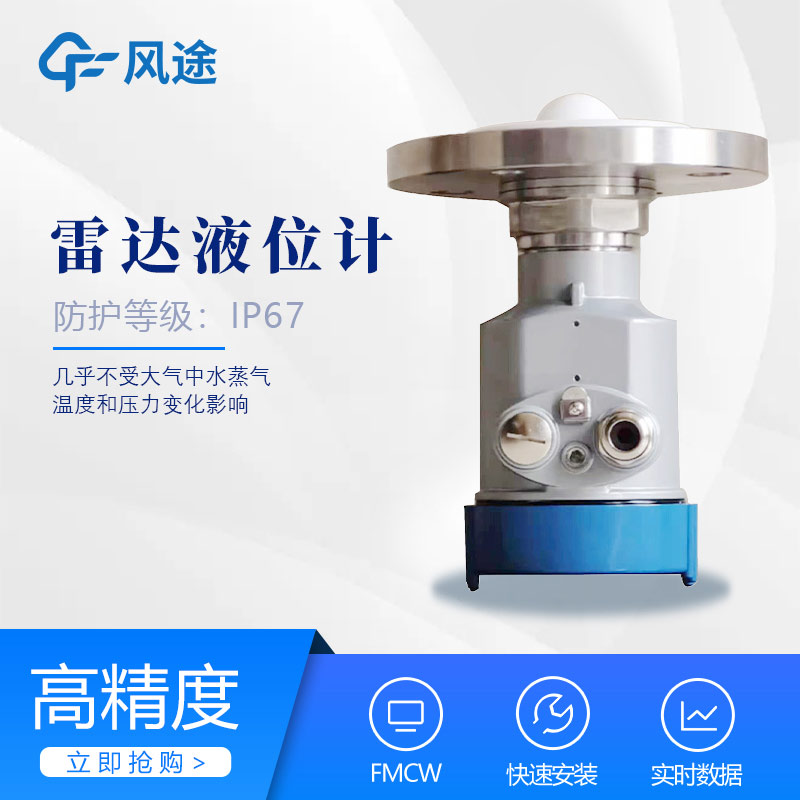Shandong Fengtu IOT Technology Co., Ltd
Sales Manager:Ms. Emily Wang
Cel,Whatsapp,Wechat:+86 15898932201
Email:info@fengtutec.com
Add:No. 155 Optoelectronic Industry Accelerator, Gaoxin District, Weifang, Shandong, China

Sales Manager:Ms. Emily Wang
Cel,Whatsapp,Wechat:+86 15898932201
Email:info@fengtutec.com
Add:No. 155 Optoelectronic Industry Accelerator, Gaoxin District, Weifang, Shandong, China
time:2024-04-01 09:36:32 source:Weather Station viewed:640 time
Radar is a ground-breaking electronic technology of the 20th century, originating from an early system developed in the United Kingdom in 1935 to defend against airborne threats. Today, the technology has evolved and serves a number of important fields such as aviation, geographic mapping, weather monitoring and marine navigation.
Radar works in a similar way to the eye, but it uses radio waves to detect and measure targets. The word "radar" comes from an acronym that stands for "radio detection and ranging". Although radio waves and light waves are both electromagnetic waves, they exist in different frequency bands. Both travel at the speed of light, but radio waves are particularly suited to radar systems because they can penetrate clouds and other obstacles to detect distant objects.
How a radar level gauge works:
It works by emitting electromagnetic waves and receiving signals from these waves as they reflect back from the surface of the liquid. The antenna of the radar level gauge emits electromagnetic pulses and when these pulses meet the surface of the liquid they are reflected and the reflected waves are captured by the same antenna.
By measuring the time it takes for an electromagnetic wave to travel from emission to reception of the return wave, the radar level gauge can calculate the distance from the antenna to the surface of the liquid. This distance is proportional to the speed of propagation of the electromagnetic wave (the speed of light) and the running time, and can be expressed by the formula D = CT/2, where D is the distance, C is the speed of light, and T is the round trip time of the electromagnetic wave.
Since the radar level gauge knows the fixed distance E to the bottom of the empty tank, the height L of the liquid can be obtained by subtracting the distance D from the antenna to the surface of the liquid, i.e. L = E - D. In this way, the radar level gauge can accurately measure and display the current height of the liquid.
Currently there are two main types of radar level gauges: pulsed radar and FM continuous wave radar.
Pulsed radar occupies a central position in the development of radar technology due to its advantages in precise ranging. This type of radar works by transmitting a pulsed signal and waiting for an echo to be reflected back. Since the reception of the echo occurs in the interval between the emission of the pulse, the same antenna can be used for transmission and reception, which simplifies the design of the system. The actual distance measurement is based on the time difference between the transmitted pulse and the received echo pulse. Since electromagnetic waves travel at the speed of light, by measuring this time difference, the exact distance to the target object can be calculated. This method makes pulse radar a very effective tool for distance measurement.
Frequency Modulated Continuous Wave (FMCW) radar works by transmitting a continuous electromagnetic wave with a frequency that increases linearly with time in a specific direction over a set time period, say 50 milliseconds. At the same time, it continuously receives an echo signal from the same direction using another antenna. At any given moment, the difference between the frequency of the echo and the frequency of the transmitted wave is constant, and this frequency difference is proportional to the distance from the target object to the radar station. This property allows the radar to effectively measure the position of the target object.

Meteorological environmental monitoring system refers to a series of monitoring equipment and instruments to carry out real-time, accurate and sustainable monitoring and analysis of the atmosphere, water, soil, vegetation, animals and other elements of the natural environment, in order to reveal the...
Building an Atmospheric Environment Monitoring System requires consideration from multiple aspects. First, regarding site layout, scientific planning should be carried out based on factors such as urban functional zoning, population distribution, and the location of pollution sources. Urban points f...
With the urgent demand for meteorological information from all walks of life, small portable automatic weather stations with stable performance and accurate operation have become popular instruments and equipment in the market. Automatic weather stations can work normally in a variety of natural env...
Atmospheric transmittance refers to the ratio of the luminous flux that passes through the atmosphere to the incident luminous flux when light propagates in the atmosphere. When the atmospheric transmittance is high, it means that more light can successfully propagate in the atmosphere. In this case...